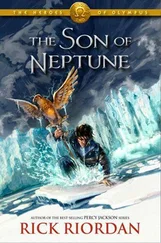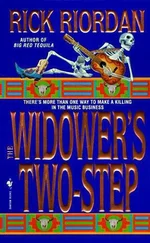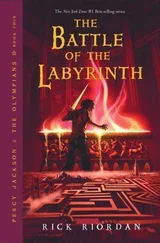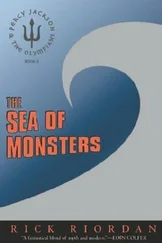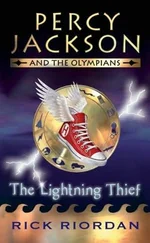(See Centaurs, Circe, Chiron, Colchis, Golden Fleece, Harpies, Hylas, Medea, Orpheus, Sirens)
K
Kampê
A female monster with a female head and torso and a scorpion’s tail, sometimes described as having wings. She guarded the Hekatonkheires and Cyclopes when Kronos trapped them in Tartarus, and was killed by Zeus when he rescued them for help in the battle against the Titans.
Kronos
Youngest of the Titans, son of Uranus and Gaia, who castrated and overthrew his father. Kronos married his sister Rhea, who gave birth to many of the Olympian gods (Demeter, Hades, Hestia, Hera, Poseidon, and Zeus). Fearing that his children would overthrow him as he had overthrown his own father, Kronos swallowed them all as babies except the youngest, Zeus, for whom Rhea substituted a stone. Later Zeus led a revolt against his father, making Kronos vomit back up all the gods he had swallowed. Kronos was then imprisoned in Tartarus, the depths of the Underworld. Paradoxically, Kronos’ reign was later also remembered as a Golden Age, a utopian era in which there was universal peace and humanity did not have to work, as the earth produced food for free.
(See Aphrodite, Hades, Hestia, Kampê, Ouranos, Titans, Zeus)
L
Labyrinth
Maze built on the island of Crete to hide the Minotaur, the half-bull, half-human offspring of Queen Pasiphae and a bull. King Minos ordered the Athenian master craftsman Daedalus to create an impenetrable maze with countless twists and turns to conceal this monster of royal birth, and the Minotaur grew up in the Labyrinth’s center, living off of the sacrificial victims that were sent to feed him. Thrust into the Labyrinth, these victims became hopelessly lost in its corridors until the beast loomed up out of the darkness to devour them. The word “labyrinth” possibly derives from the same root as labrys , the ancient name for a double-headed ax, a common Cretan religious symbol.
(See Ariadne, Minos, Minotaur, Pasiphae, Theseus)
Laistrygonians
Cannibalistic giants who lived in the land of Lamus, somewhere in the western Mediterranean. Odysseus and his sailors, going ashore for water and food during their long wandering, encountered the Laistrygonians. Two of them were eaten by the Laistrygonians before the rest of the crew managed to escape.
Laurel
Plant with leaves sacred to Apollo, the god of poetry, sport, and music. Crowns of laurel leaves were usually given to victors in poetry and athletic contests (and were the only prizes given to winners at the ancient Olympic Games). Today national poets are often called poets laureate after this tradition.
(See Apollo, Dryads)
Lotus
Plant with leaves that, when eaten, make you forget all desires. Odysseus on his long voyages around the Mediterranean came to the mysterious Land of the Lotus Eaters (which may have been in modern Tunisia, north Africa), whose inhabitants lived idle, contented lives thanks to their diet of lotus leaves. Some of Odysseus’ sailors who tried eating the lotus plant lost all their longing to return home and had to be dragged back to the ships by their comrades.
M
Maenads
Manic, intoxicated female followers of the wine god Dionysus. Maenads took part in drunken orgia (orgies) on the mountainside outside Greek cities, dancing alongside the god of ecstasy to the sound of drums and flutes. It was death to any man to stand against them, as Pentheus, king of Thebes, and the grieving poet Orpheus discovered: Both men were torn apart by these raving female worshippers.
(See Dionysus, Orpheus)
Master Bolt
Final, most awesome weapon of Zeus, which he only unleashed after consulting with the other gods.
Medea
Granddaughter of Helios, the sun god, and daughter of the king of Colchis, home of the Golden Fleece. As the niece of Circe, the witch who turned Odysseus’ men into swine, Medea had magic in her blood and knew the lore of sacred herbs and potions. She helped Jason win the Golden Fleece before sailing off with him to become queen of Corinth. When Jason left her for another woman, however, she revealed her full fury. She murdered Jason’s new bride and also her own children by him, then flew off to Athens in a winged chariot drawn by dragons. In Athens she seduced the elderly King Aegeus and tried to poison Aegeus’ young son Theseus when he turned up in disguise. Foiled just in time when Theseus revealed his true identity, Medea again took off in her chariot, returning to Colchis.
(See Circe, Colchis, Golden Fleece, Jason, Talos, Theseus)
Medusa
One of the three Gorgons. Medusa and her sisters, Stethno and Euryale, had wings, bronze claws, and glaring eyes, and their horrific appearance alone was enough to turn all who looked on them into stone. She was killed by the hero Perseus, who, with the help of the goddess Athena and the god Hermes, surprised her while she slept and cut off her head. From Medusa’s severed neck sprang the winged horse Pegasus, on which Perseus fled from the other enraged Gorgons.
(See Andromeda, Athena, Geryon, Helm of Darkness, Pegasus, Perseus)
Minos
Legendary king of Crete who lived three generations before the traditional date of the Trojan War. The son of Zeus and Europa, a princess whom Zeus had carried off from her home, Minos was renowned for his kingly wisdom. He drew up laws with his brother Rhadamanthys and, in the Underworld, was said to judge the dead. But he wasn’t always wise. One day Minos prayed to Poseidon, god of the sea, to send him a fine bull to sacrifice. Minos was so impressed by Poseidon’s bull that he decided to keep it—an unfortunate decision, for his wife, Pasiphae, became besotted with it. From her passion was born the half-human Minotaur, which was kept in the Labyrinth under Minos’ palace in Knossos. Minos also built the first navy that ruled the waves, making him thalassocrat , sea ruler. When the Athenians killed his son Androgeus, he made them send an annual tribute of seven youths and seven maidens to be sacrificed to the Minotaur, which continued until Theseus killed the monster. The name Minoan is used by modern archaeologists for the whole Ancient Cretan civilization of the Bronze Age.
(See Ariadne, Cadmus and Europa, Cocalus, Hades, Labyrinth, Minotaur, Pasiphae, Theseus, Zeus)
Minotaur
Son of Queen Pasiphae of Crete and a bull sent to Pasiphae’s husband, King Minos, by Poseidon, god of the sea. It had a bull’s head and legs but the body of a man. King Minos of Crete, appalled by his queen’s monstrous offspring, had the Labyrinth built to contain it. The Minotaur lived in its center and was fed on a diet of human sacrifices from Athens. The Minotaur, though possessed of immense strength, finally met his match in Theseus, the Athenian hero who killed him with the aid of Princess Ariadne, the Minotaur’s half-sister.
(See Aegean Sea, Ariadne, Labyrinth, Minos, Pasiphae, Pankration, Theseus)
Morpheus
God of dreams. The son of Somnus, he is often depicted as a chubby, winged child holding poppies.
Mount Etna
Volcano in eastern Sicily. Mount Etna was the highest volcano known to the Greeks. Reaching almost 11,000 feet, it is snow-capped much of the year. It is also frequently volcanically active, although its damage does not usually spread far. In its fiery depths Hephaestus, the blacksmith god, was said to have his main furnace, where he hammered away at his magical forge with the assistance of one-eyed giant Cyclopes. The philosopher and magus Empedocles met his death by throwing himself into Etna’s molten mouth.
Читать дальше


